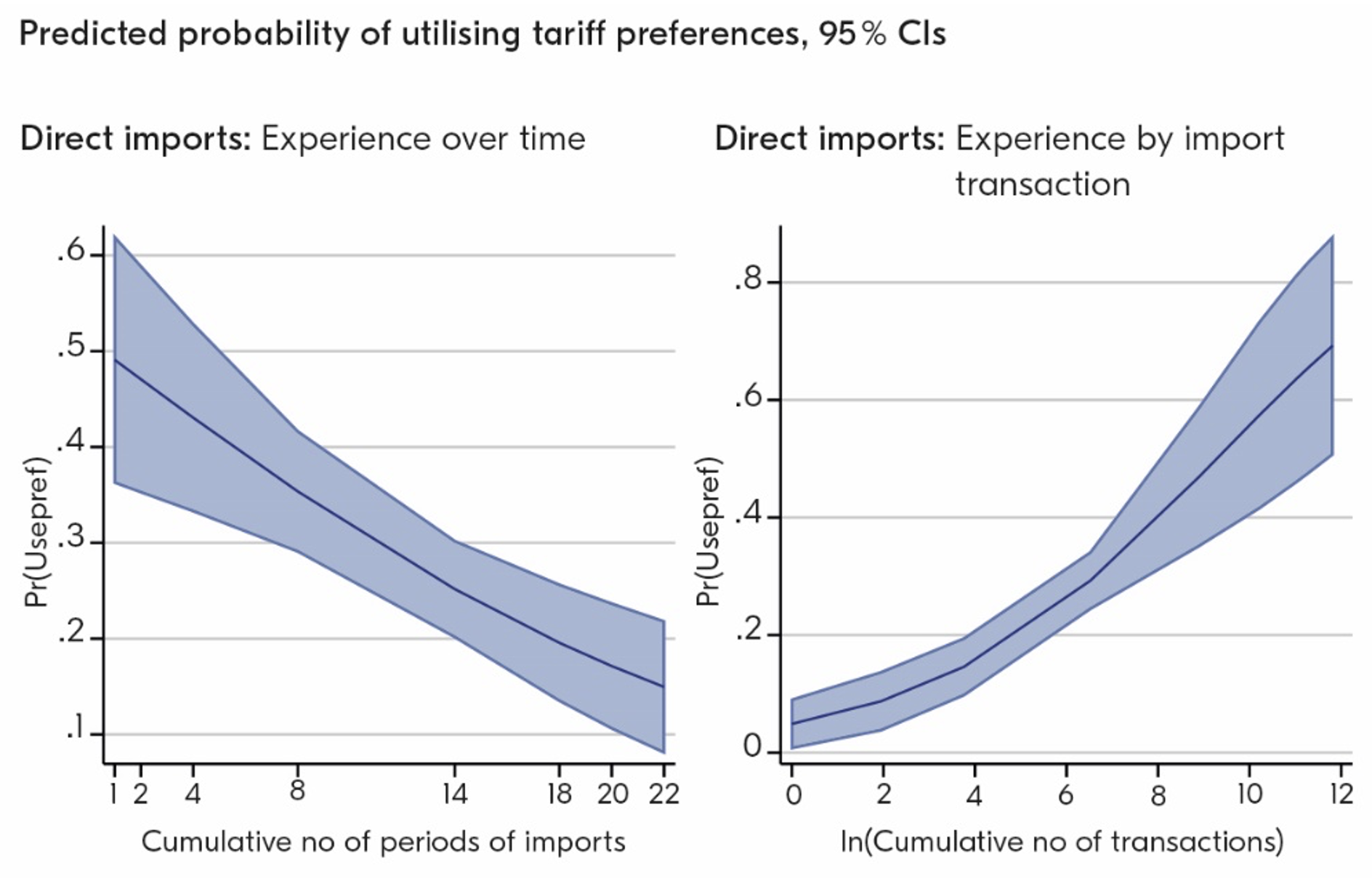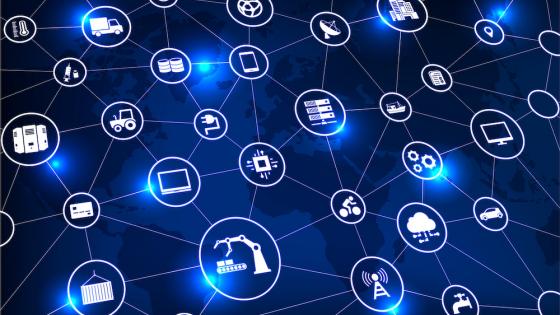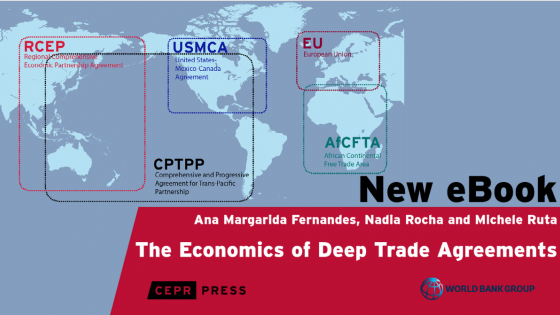The EU has established a large number of free trade agreements (FTAs) with partner countries around the world over the past two decades. The immediate objective is to promote more trade by eliminating or reducing import tariffs and other barriers to trade (Dhingra et al. 2021, Espitia et al. 2019, Fernandes et al. 2021). More trade, in turn, is expected to contribute to economic growth through increased specialization, efficiency gains, and product diversity (Corcos et al. 2012, Melitz and Reading 2014).
A key benefit of an FTA lies in the tariff preferences offered by the agreement. The utilisation of tariff preferences is, however, associated with costs related to the rules of origin of the handling of administrative procedures (Felbermayr et al. 2019, Haaland and Wooton 2021). Weighing benefits against expected costs, firms may choose not to utilise existing tariff preferences, particularly when the FTA is relatively new and information is limited. This introduces questions about how long it takes to acquire the knowledge needed to utilise tariff preferences, and what determines learning outcomes.
To address these questions, we have analysed Swedish import transaction-level and firm-level data for the EU-South Korea FTA during the period 2008-2018 (Kasteng et al. 2022).1
Stylised facts from the literature
It is often argued that rules of origin are a major determinant of preference utilisation and that more restrictive rules of origin reduce the utilisation of tariff preferences (Felbermayr et al. 2019, Haaland and Wooton 2021, Hayakawa et al. 2014, Kim and Cho 2010). The costs related to proving the origin largely affect exporters, but it is the importer that has to request the use of the tariff preference and handle the necessary customs administration (Kasteng and Almufti 2021).
Studies based on aggregate trade data, including Hayakawa et al. (2013), Hayakawa et al. (2014), Keck and Lendle (2012) and Nilsson (2016), have identified a positive correlation between the size of the preference margin and preference utilisation. However, while a positive preference margin is necessary, it has been shown in studies using transaction-level data that the value of the import transaction is more important than the size of the preference margin, possibly because preference margins vary less (Kasteng et al. 2021).
Few studies have analysed preference utilisation over time based on transaction-level data. A rare exception is Krishna et al. (2021), who analyse learning over time from an exporter-cost perspective. Their analysis complements our approach, which focuses on the importer-benefit perspective.
Empirical findings: growing imports and preference saving rates
The EU-South Korea FTA came into force in July 2011. The value of Swedish imports from South Korea had been stable during the three preceding years, as seen in Figure 1, but started growing as soon as the FTA came into force. Figure 1 also shows that a large share of imports benefitted from tariff preferences from the very beginning, with a preference savings rate of over 60%.2
Figure 1 Import values and preference savings rates over time
The value of annual imports rose again about four years after the entry into force of the FTA, at the same time as the preference saving rate climbed above 90%. Evidently, firms were learning to use the FTA. The following paragraphs show how changes in the number of importers, the entry and exit of importers, and the frequency of import transactions are related to the learning process reflected in Figure 1.
Number of importers and average import values
Figure 2 shows that about 620 firms were importing from South Korea during the three years before the FTA, and that the number increased to about 750 after seven years. Total imports tripled over the same period, from around €200 million to €600 million. This means that the average import value per firm increased greatly.
Figure 2 Number of importers over time
Figure 2 also shows that more than half of the importers did not use tariff preferences even at the end of the period. Given the high preference savings rate (shown in Table 1), it is clear that the increase in imports was concentrated among importers utilising tariff preferences and that non-users were relatively marginal importers engaged in small and irregular import transactions.
Firm turnover and permanent importers
Despite the limited increase in the number of importers, the turnover of firms was high, with many entries and exits. To understand learning over time, it is helpful to focus on the ‘permanent importers’, i.e. the firms that made at least one import transaction every year during the period.
Figure 3 shows that the permanent importers learned to use the FTA faster than the average importer and that they recorded higher levels of preference utilisation. The permanent importers reached a preference savings rate of 75% already by the first year of the FTA and reached above 95% after only four years.
Figure 3 Preference savings rates for permanent importers over time
The lower preference savings rate for the average importer is probably related to the continuous entry and exit of firms and limited incentives and opportunities to learn about tariff preferences.
Frequency of import transactions
In analyses of learning processes, it is natural to use the individual import transaction as the unit of analysis.3 Since each import transaction is an opportunity for learning, it is possible to consider both the number of import transactions and the length of time during which the firm has been an active importer as proxies for experiential learning. In our analysis of import transaction frequency, we differentiate between firms making a few import transactions (fewer than five) and firms carrying out a large number of import transactions (over 100) during the period. This distinction is useful for examining the learning effects of repeated import transactions.
Figure 4 Preference savings rates by transaction category over time
The left-hand panel of Figure 4 shows that the preference savings rate tended to increase over time for all categories of firms. In addition, firms making many import transactions learned faster and recorded a higher preference savings rate compared to firms making fewer import transactions. These observations are consistent with both the hypothesis that there is learning over time and the hypothesis that learning is linked to the number of repeated import transactions.
The right-hand panel of Figure 4 shows how learning varied across firm-size and transaction frequency categories. It suggests that preference savings rates are more closely related to the number of import transactions than the size of the firm. Similar results were found in Kasteng et al. (2021), where a key finding was that the preference savings rate was weakly related or unrelated to firm size.
Is it learning over time or learning by doing?
The learning-over-time hypothesis suggests that the longer a firm is engaged in importing goods from a specific partner country, the more it will learn about utilising tariff preferences. This implies a positive link between the cumulated time a firm has been an importer and its preference utilisation. An alternative hypothesis is that it is not time that matters, but rather ‘learning by doing’, which can be proxied by the total number of import transactions carried out over the period. From a practical point of view, learning about tariff preferences probably includes both these dimensions. It is reasonable to expect a higher learning effect from managing many import transactions over a long time than a few import transactions dispersed over many years. However, which has the higher marginal effect – time or the number of import transactions?
Figure 5 Learning over time versus learning by doing and preference utilisation
Note: The graphs show the relationship between how long a firm has been importing (left) and how many import transactions have been conducted (right) on the x-axis and the probability of using the preference on the y-axis
Figure 5 summarises the econometric analysis from Kasteng et al. (2022) and suggests that preference utilisation increases with the number of repeated import transactions rather than with the length of time as an importer. In other words, adding one import transaction to the model, holding time and all other variables constant, raises the probability that tariff preferences will be utilised. There, however, is no similar relationship between the amount of time a firm has been active as an importer and its preference utilisation. Instead, ceteris paribus, the longer a firm has been active in direct imports, the less likely it is that it will utilise tariff preferences. A partial explanation could be that corporate learning has a ‘best before’ date: if too long a time passes between each import transaction, firms may forget how to administrate procedures, routines may change, and skilled employees may be replaced over time.
Conclusion
Learning takes time, but time alone does not guarantee to learn. Importers seem to learn about preference utilization mainly by carrying out repeated import transactions. The number of years as an importer does not seem to matter – on the contrary, long-time importers that have not used tariff preferences in the past are less likely to start utilising them in the future.
References
Corcos, G, M Del Gatto, G Mion and G Ottaviano (2012), “Productivity and firm selection: Quantifying the ‘new’ gains from trade”, VoxEU.org, 10 July.
Dhingra, S, R Freeman and H Huang (2021), “The trade and welfare benefits of deep trade agreements”, VoxEU.org, 21 January.
Espitia, A, A Mattoo, M Mimouni, X Pichot and N Rocha (2019), “Assessing the preferences in preferential trade”, VoxEU.org, 10 July.
Felbermayr, G, F Teti, E Yalcin (2019), “Rules of origin in trade arrangements: Largely unnecessary, simply protectionist”, VoxEU.org, 10 September.
Fernandes, A, N Rocha and M Ruta (2021), “The economics of deep trade agreements: A new eBook”, VoxEU.org, 23 June.
Haaland, J and I Wooton (2021), “Free trade agreements do not always ensure free trade”, VoxEU.org, 14 May.
Hayakawa, K, D Hiratsuka, K Shiino and S Sukegawa (2013), “Who uses free trade agreements?”, Asian Economic Journal 27(3): 245–264.
Hayakawa, K, H Kim and H H Lee (2014), “Determinants on utilization of the Korea–ASEAN free trade agreement: Margin effect, scale effect, and RoO effect”, World Trade Review 13(3): 499–515.
Kasteng, J and N Almufti (2021), “How Companies Use Free Trade Agreements: A Survey of Swedish Exporters and Importers in Trade with South Korea”, Stockholm, Sweden: National Board of Trade Sweden.
Kasteng, J, A Kokko and P Tingvall (2021), World Trade Review, Cambridge University Press.
Kasteng, J, N Norell and P Tingvall (2022), “Learning by Using Free Trade Agreements: A Firm and Transaction-Level Analysis of the EU-South Korea FTA”, Stockholm, Sweden: National Board of Trade Sweden.
Keck, A and A Lendle (2012), “New Evidence on Preference Utilization”, WTO Staff Working Paper ERSD-2012-12.
Kim, H S and M J Cho (2010), “Impact of Rules of Origin on FTA Utilization in Korea FTAs”, Korea Institute International Economic Policy (KIEP) Working Paper, 10-08.
Krishna, K, C Salamanca, Y Suzuki and CV Martincus (2021), “Learning to Use Trade Agreements”, NBER Working Paper No. 29319.
Melitz, M and S Reading (2014), “Missing gains from trade?” VoxEU.org, 10 March.
Nilsson, L (2016), “EU exports and uptake of preferences: a first analysis”, Journal of World Trade 50(2).
Endnotes
1 This column draws on an analysis of about one million import transactions carried out by around 6,500 companies.
2 The preference savings rate measures the utilization of tariff preferences in an FTA. It is defined as the value of actual duty savings from utilizing tariff preferences on preferential imports as a share of the value of potential duty savings (i.e. actual duty savings and forgone duty savings).
3 An import transaction is here defined as the imports by a specific importer of a specific product (at the 10-digit Taric level) from a specific exporter on a specific day.












